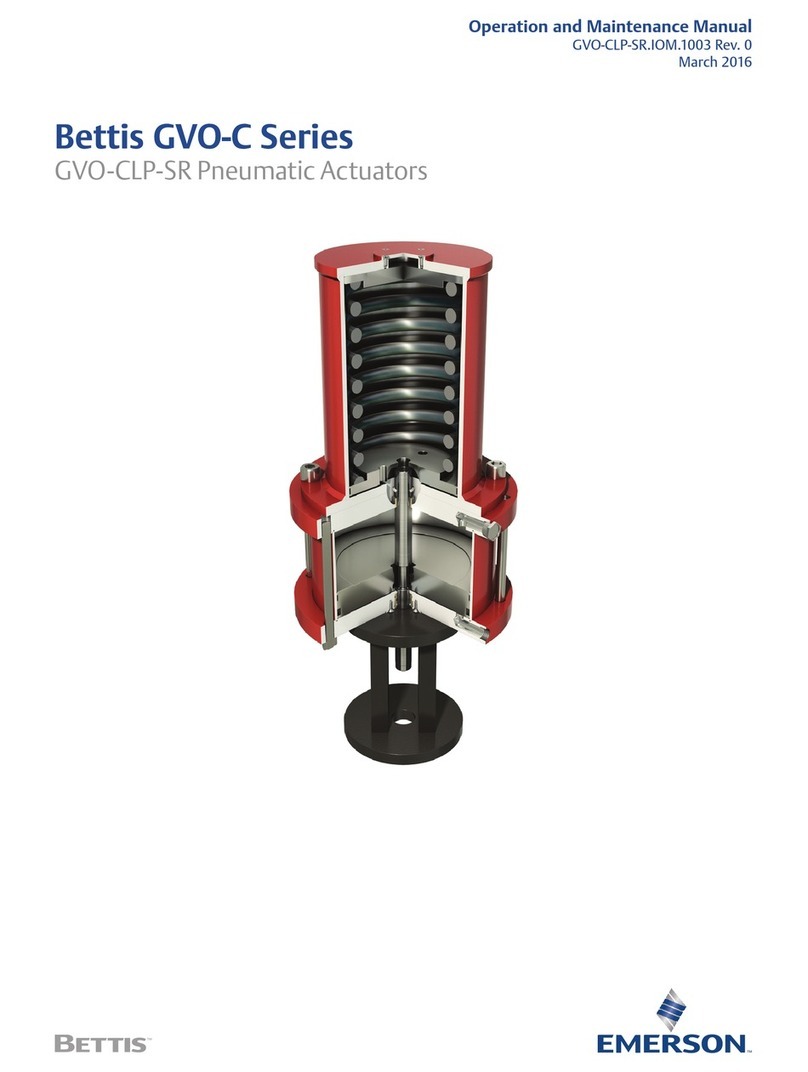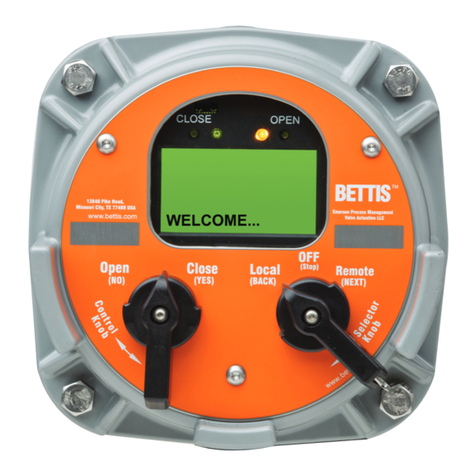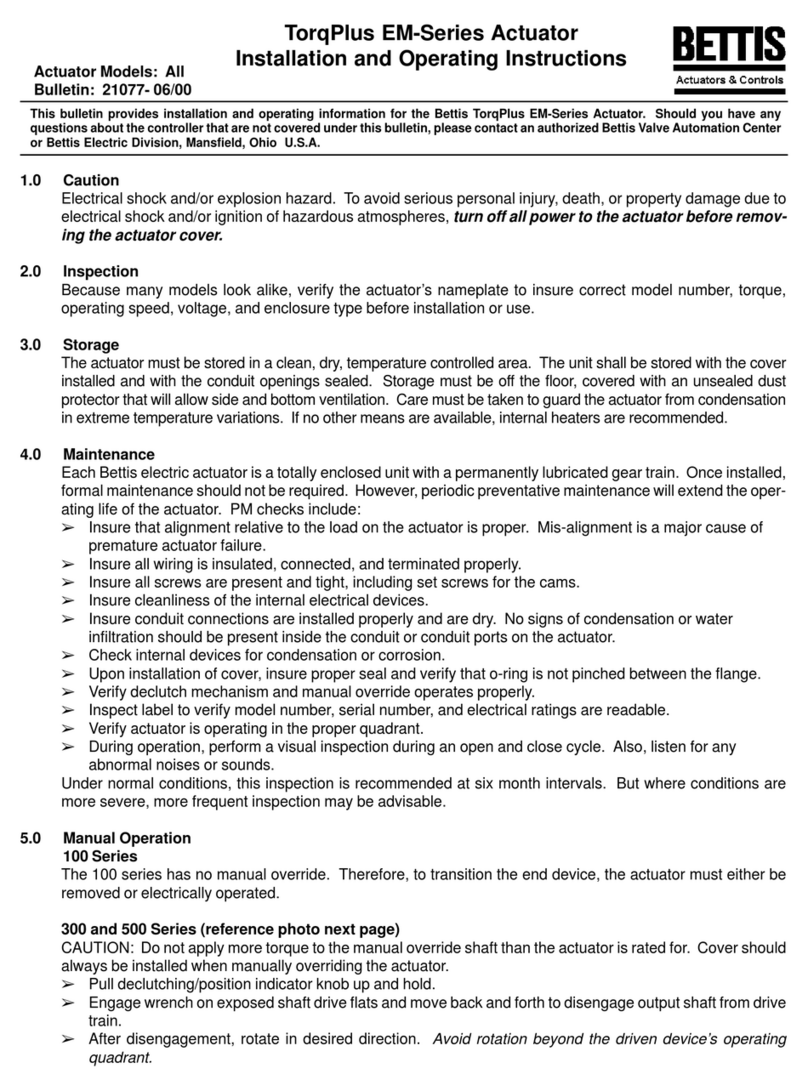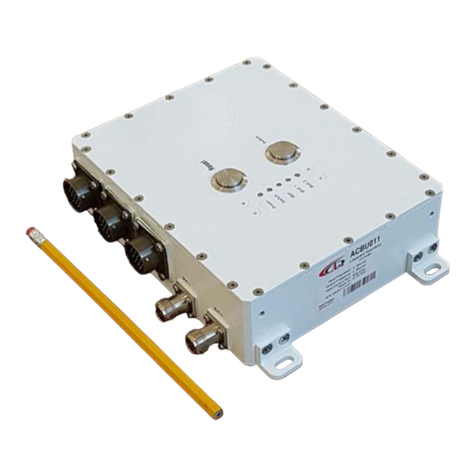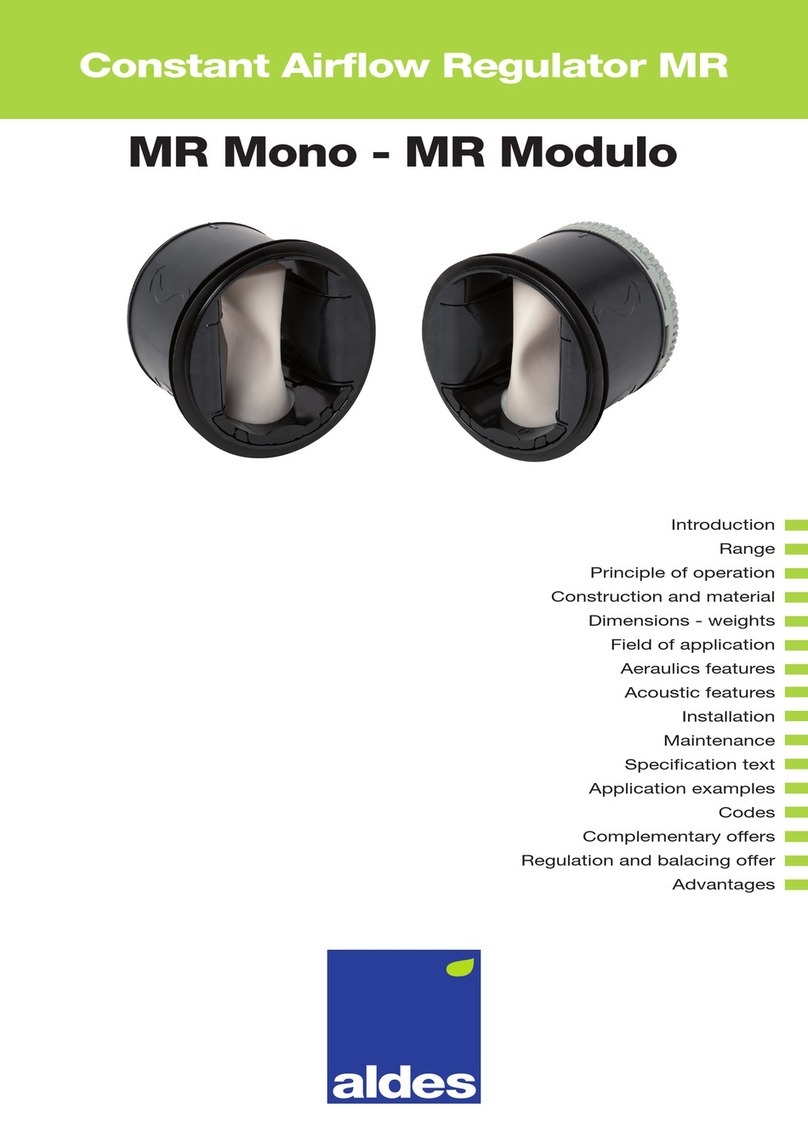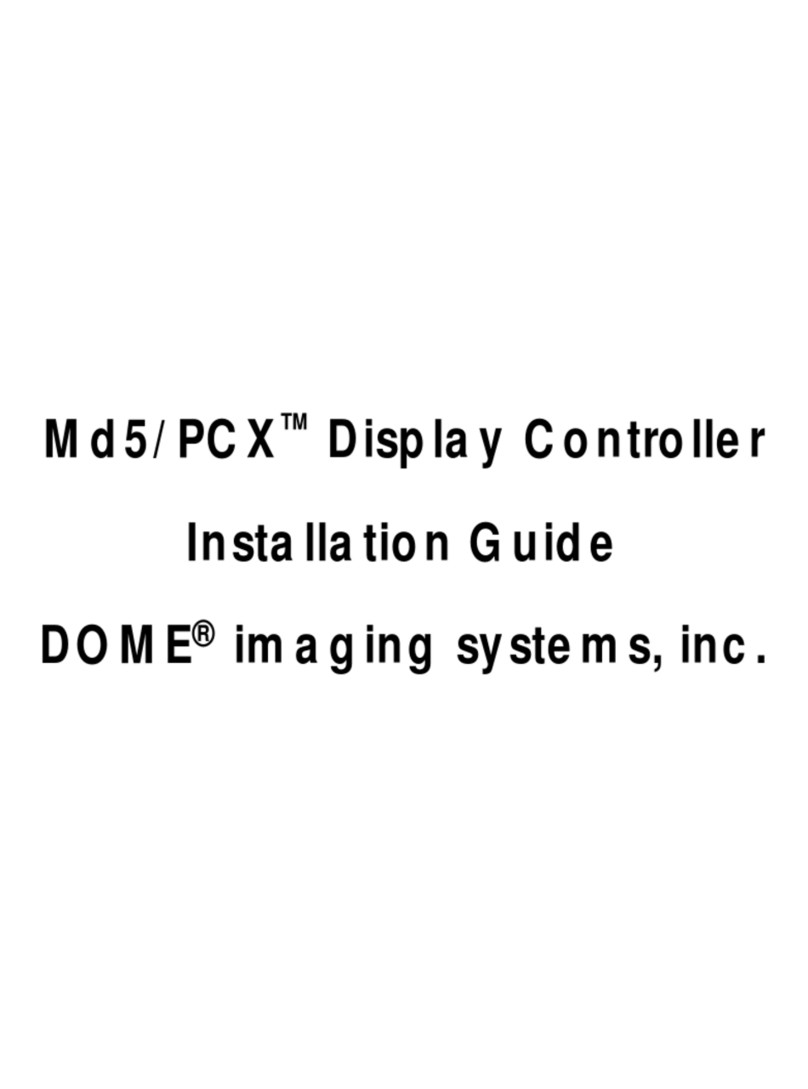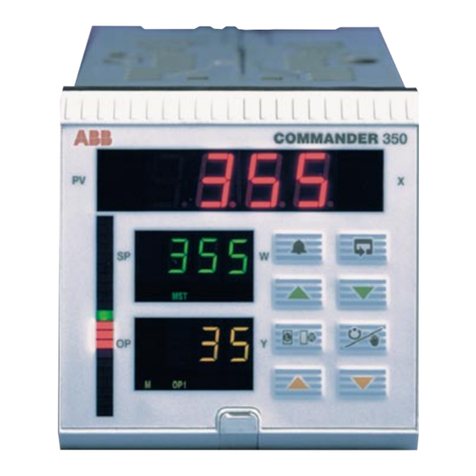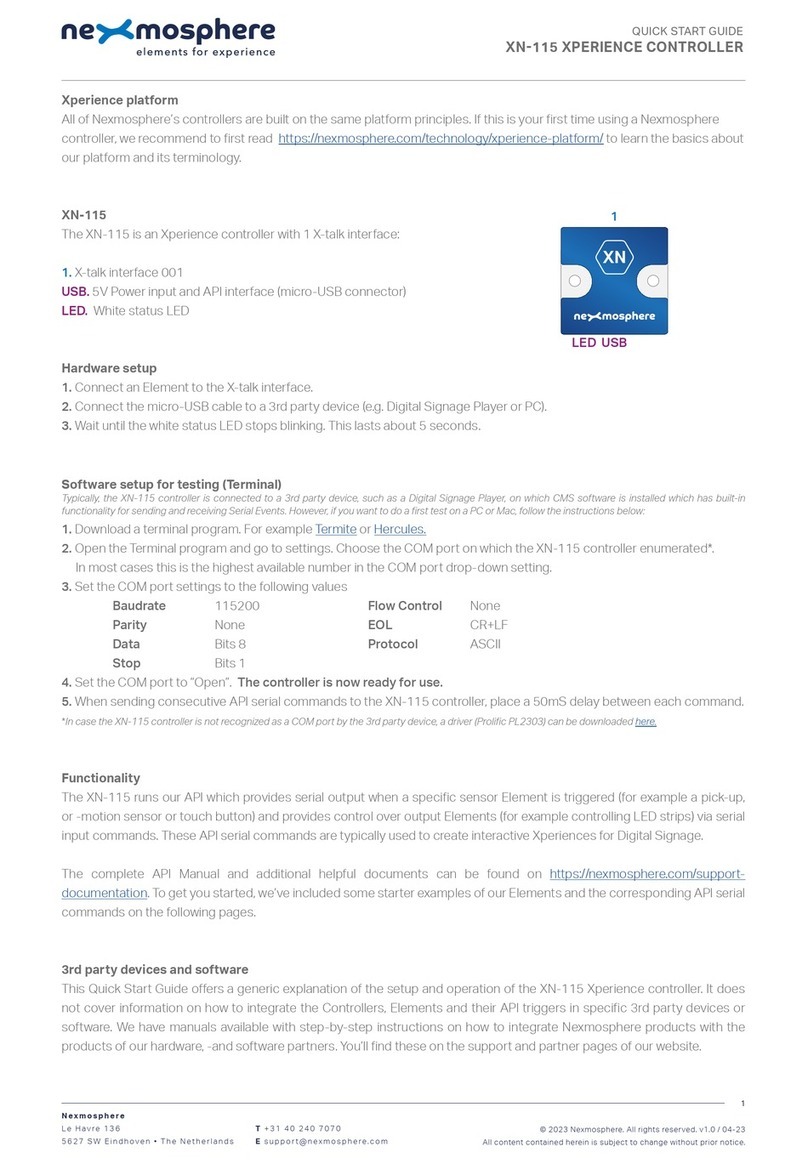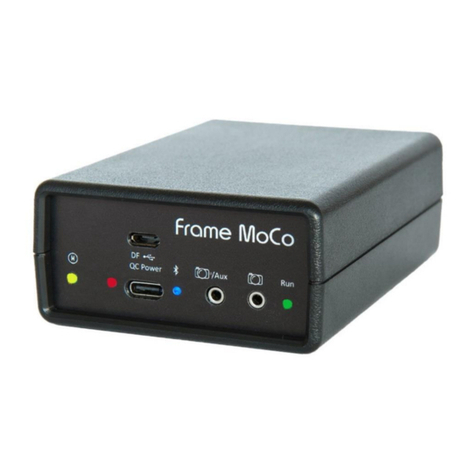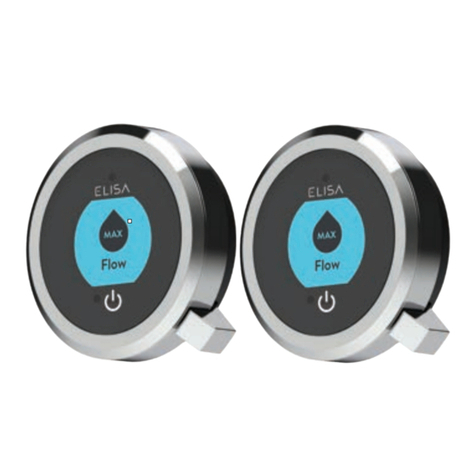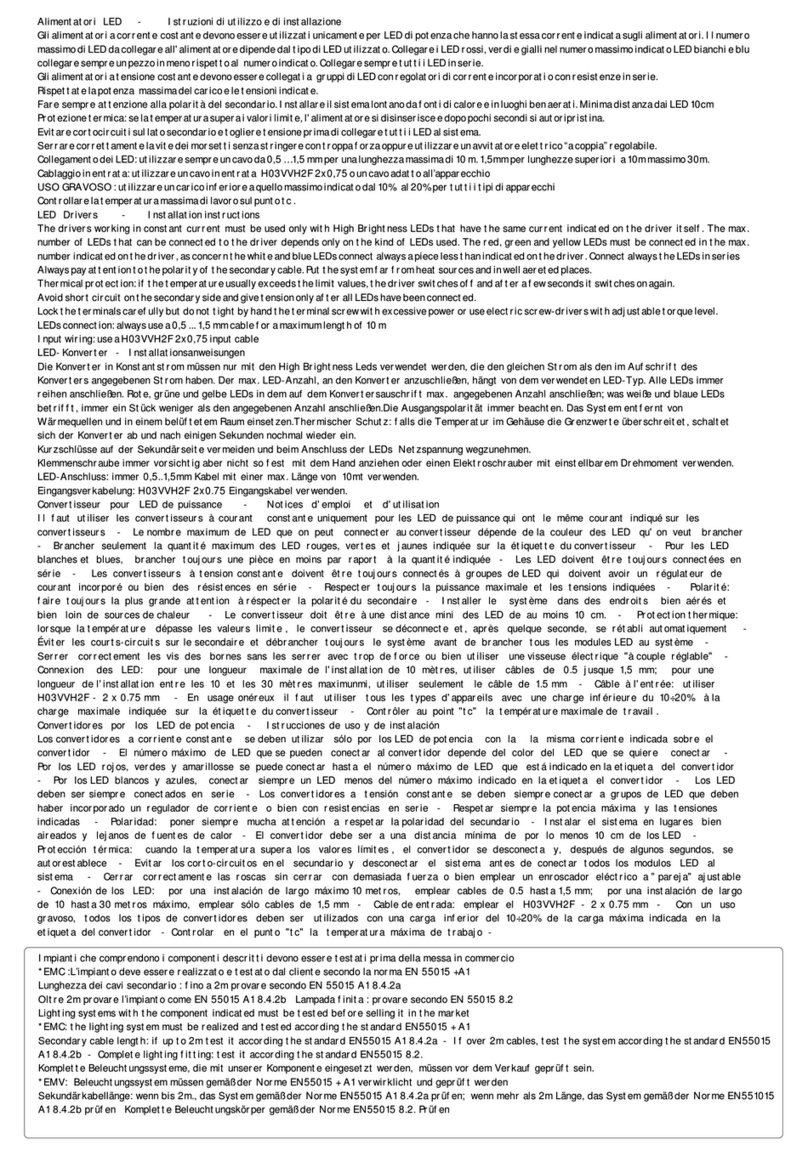Bettis G01 SR Series Operating instructions

ENGLISH LANUAGE
BETTIS
SERVICE INSTRUCTIONS
FOR MODELS
G01 THROUGH G10
SPRING RETURN
PNEUMATIC ACTUATORS
WITH M11 HYDRAULIC OVERRIDE
PART NUMBER: 127073E
REVISION: “A”
DATE: December 2001

Bettis P/N 127073E
Revision “A”
Page 1of 37
CONTENTS
SECTION 1.0 – INTRODUCTION PAGE
1.1 General Service Information ..................................................................... 2
1.2 Definitions ................................................................................................. 3
1.3 General Safety Information ...................................................................... 3
1.4 Bettis Reference Materials ....................................................................... 3
1.5 Service Support Items .............................................................................. 4
1.6 Lubrication Requirements ........................................................................ 4
1.7 General Tool Information ......................................................................... 4
SECTION 2.0 – ACTUATOR DISASSEMBLY
2.1 General Disassembly ............................................................................... 5
2.2 Pneumatic Power Module Disassembly ................................................... 5
2.3 Drive Module Disassembly ....................................................................... 7
2.4 G2 - G5 M11 Hydraulic Override Cylinder Disassembly ......................... 10
2.5 G7 - G10 M11 Hydraulic Override Cylinder Disassembly ....................... 10
SECTION 3.0 – ACTUATOR REASSEMBLY
3.1 General Reassembly ............................................................................... 11
3.2 Drive Module Reassembly ...................................................................... 11
3.3 Pneumatic Power Module Reassembly.................................................... 15
3.4 G2 And G3 Early Model Pneumatic Power Module Reassembly ............ 18
3.5 G01 Through G5 M11 Hydraulic Override Cylinder Reassembly ............ 20
3.6 G7 through G10 M11 Hydraulic Override Cylinder Reassembly ............. 20
3.7 Actuator Testing ...................................................................................... 21
SECTION 4.0 – FIELD CONVERSIONS
4.1 Fail Mode Reversal (CW to CCW, etc.) .................................................. 22
4.2 Double Acting To Spring Return With Override Cylinder Assembly ......... 22
SECTION 5.0 – MODULE REMOVAL AND INSTALLATION
5.1 M11 SR Override Cylinder Assembly Removal ....................................... 23
5.2 M11 SR Override Cylinder Assembly Installation .................................... 24
5.3 Spring Module Removal .......................................................................... 25
5.4 Spring Module Installation ....................................................................... 26
5.5 Pneumatic Power Module Removal ........................................................ 29
5.6 Pneumatic Power Module Installation ..................................................... 29
5.7 Powr Swivl Module Removal ................................................................... 30
5.8 Powr Swivl Module Installation ................................................................ 30
SECTION 6.0 – ACTUATOR SUPPORT INFORMATION
6.1 M11 Hydraulic Override Fluid Volume Table ........................................... 31
6.2 Module Weight Table .............................................................................. 31
6.3 G01 Tool Table ........................................................................................ 33
6.4 G2 Tool Table .......................................................................................... 33
6.5 G3 Tool Table .......................................................................................... 34
6.6 G4 Tool Table .......................................................................................... 34
6.7 G5 Tool Table .......................................................................................... 35
6.8 G7 Tool Table .......................................................................................... 35
6.9 G8 Tool Table .......................................................................................... 36
6.10 G10 Tool Table ........................................................................................ 36

Bettis P/N 127073E
Revision “A”
Page 2of 37
SECTION 1 - INTRODUCTION
1.1 GENERAL SERVICE INFORMATION
1.1.1 This service procedure is offered as a guide to enable general maintenance to be performed
on Bettis G01XXX-SR, G2XXX-SR, G3XXX-SR, G4XXX-SR, G5XXX-SR, G7XXX-SR,
G8XXX-SR, and G10XXX-SR Spring Return Series Single Pneumatic Power Module
Actuators with M11 or M11-S hydraulic override module.
1.1.2 Normal recommended service interval for this actuator series is five years.
NOTE: Storage time is counted as part of the service interval.
1.1.3 This procedure is applicable with the understanding that all electrical power and
pneumatic pressure has been removed from the actuator.
1.1.4 Remove all piping and mounted accessories that will interfere with the module(s) that are
to be worked on.
1.1.5 This procedure should only be implemented by a technically competent technician who
should take care to observe good workmanship practices.
1.1.6 Numbers in parentheses, ( ) indicate the bubble number (reference number) used on the
Bettis Assembly Drawing and Actuator Parts List.
1.1.7 This procedure is written using the stop screw side of the housing (1-10) as a reference
and this side will be considered the front side of the actuator. The housing cover (1-20)
will be the top of the actuator.
1.1.8 Actuator Module weights are listed in Section 6 Table 6.2.
1.1.9 When removing seals from seal grooves, use a commercial seal removing tool or a small
screwdriver with sharp corners rounded off.
1.1.10 Use a non-hardening thread sealant on all pipe threads.
CAUTION: Apply the thread sealant per the manufacture's instructions.
1.1.11 Bettis recommends that disassembly of the actuator components should be done in a
clean area on a workbench.

Bettis P/N 127073E
Revision “A”
Page 3of 37
1.2 DEFINITIONS
WARNING: If not observed, user incurs a high risk of severe damage to actuator and/or fatal
injury to personnel.
CAUTION: If not observed, user may incur damage to actuator and/or injury to personnel.
NOTE: Advisory and information comments provided to assist maintenance personnel to
carry out maintenance procedures.
1.3 GENERAL SAFETY INFORMATION Products supplied by Bettis, in its "as shipped" condition, are
intrinsically safe if the instructions contained within this Service Instruction are strictly adhered to and
executed by well-trained, equipped, prepared and competent personnel.
WARNING: For the protection of personnel working on Bettis actuators, this procedure
should be reviewed and implemented for safe disassembly and reassembly.
Close attention should be noted to the WARNINGS, CAUTIONS and NOTES
contained in this procedure.
WARNING: This procedure should not supersede or replace any customer’s plant safety
or work procedures. If a conflict arises between this procedure and the
customer’s procedures the differences should be resolved in writing between
an authorized customers representative and an authorized Bettis
representative.
1.4 BETTIS REFERENCE MATERIALS
1.4.1 Assembly Drawing for G2-SR-M11 through G5-SR-M11 model actuators with one
Pneumatic Power Module and one Spring Module with M11 Hydraulic Override Module use
part number 121410.
1.4.2 Assembly Drawing for G7-SR-M11 through G10-SR-M11 model actuators with one
Pneumatic Power Module and one Spring Module with M11 Hydraulic Override Module use
part number 121411.
1.4.3 M11 Manual Hydraulic Override System operating instructions part number 126858 with
M11 assembly drawing part number 126567.
1.4.4 M11-S Manual Hydraulic Override System operating instructions part number 121960 with
M11-S assembly drawing part number 121107.

Bettis P/N 127073E
Revision “A”
Page 4of 37
.
1.5 SERVICE SUPPORT ITEMS
1.5.1 Bettis Module Service Kits.
1.5.2 For rod extension retainer nut tool part number, refer to the following table. NOTE: These
tools are required only when extension rod assembly (1-50) or (9-50) is removed or when
a new extension rod assembly is installed.
ACTUATOR
MODEL BETTIS PART
NUMBER ACTUATOR
MODEL BETTIS PART
NUMBER
G01 None required G5/G7 117369
G2 123616 G8/G10 117368
G3/G4 117370
1.5.3 Commercial leak testing solution.
1.5.4 Non-hardening thread sealant.
1.6 LUBRICATION AND FLUID REQUIREMENTS
NOTE: Lubricants and Fluids, other than listed in step 1.6.1 and 1.6.2 should not be used without
prior written approval of Bettis Product Engineering.
1.6.1. All temperature services (-50°F to +350°F)/(-45.5°C to 176.6°C) use Bettis ESL-5
lubricant. ESL-5 lubricant is contained in the Bettis Module Service Kit in tubes or cans
and they are marked ESL-4,5 & 10 lubricant.
1.6.2 M11 Manual Hydraulic Override System Fluid Requirements: Temperature service (-35°F
to +350°F) use Dexron Automatic Transmission Fluid.
1.7 GENERAL TOOL INFORMATION
1.7.1 Tools: All tools/Hexagons are American Standard inch. Large adjustable wrench, two (2)
large screwdrivers, Allen wrench set, set of open/box-end wrenches, rubber or leather
mallet, torque wrench (up to 1200 foot pounds / 1627 N-m), breaker bar, small drift punch
and a drive socket set. For recommended tool and wrench sizes refer to Section 6, Tables
6.3 through 6.10

Bettis P/N 127073E
Revision “A”
Page 5of 37
SECTION 2 - ACTUATOR DISASSEMBLY
2.1 GENERAL DISASSEMBLY
WARNING: It is possible, that the actuator may contain a dangerous gas and/or liquids.
Ensure that all proper measures have been taken to prevent exposure or release of
these types of contaminants before commencing any work.
2.1.1 Section 2 - Actuator Disassembly is written to either completely disassemble the entire
actuator or can be used to disassemble individual Modules as needed (Pneumatic Power
Module or Drive module).
WARNING: DO NOT REMOVE SPRING MODULE WHILE SPRING IS COMPRESSED
2.1.2 When the Spring Module is to be removed it should be removed from the Drive Module
prior to the Pneumatic Power Module removal or disassembly.
2.1.3 The Pneumatic Power Module can be disassembled while still attached to the Drive
Module or the Pneumatic Power Module can be removed from the Drive Module and
disassembled separate to the actuator (refer to Section 5 - Module Removal And
Installation).
2.1.4 To ensure correct re-assembly; that is, with Pneumatic Power Module or Spring Module
on same end of Drive Module as was, mark or tag right (or left) and mark mating
surfaces.
2.1.5 For Spring Module removal and installation refer to Section 5 steps 5.3 and 5.4.
NOTE: Use a means of capturing the hydraulic fluid that will be lost during the removal or
disassembly of the override power module. Use a bucket, tub, and large container, ECT.
2.2 PNEUMATIC POWER MODULE DISASSEMBLY
NOTE: Review Section 2 steps 2.1.1 through 2.1.5 General Disassembly before proceeding with
Pneumatic Power Module Disassembly.
WARNING: If not already removed disconnect all operating pressure from actuator
power cylinders.
WARNING: The Spring Cartridge must be checked to verify that the spring(s) are in
their extended position before the Pneumatic Power Module is
disassembled from the Drive Module (refer to Section 5.3 steps 5.3.7
through 5.3.9).
2.2.1 Mark and record location of the ports on outer end cap (3-80) and inner end cap (3-10).

Bettis P/N 127073E
Revision “A”
Page 6of 37
2.2.2 If actuator is equipped with a power module mounted extended stop (ES) then rotate the ES
until clear of the piston rod (3-40).
2.2.3 Remove breather assembly (12) from outer end cap (3-80).
2.2.4 Refer to assembly drawing sheet 2 Detail "E". Remove two socket cap screws (3-130), with
lockwasher (3-140), from outer end cap (3-80).
2.2.5 Remove two tie bar hex nuts (3-90) from outboard side of outer end cap (3-80).
2.2.6 The fit between cylinder (3-70) and outer end cap (3-80) is very tight. Break end cap free by
tapping with a breaker bar on lip provided on the end cap. Remove outer end cap (3-80)
from cylinder (3-70).
CAUTION: Do not damage o-ring groove when removing end cap from cylinder.
NOTE: When removing cylinder (3-70) off of piston (3-30), tilt the cylinder 15°to 30°degrees with
respect to actuator centerline.
2.2.7 Remove cylinder (3-70) from inner end cap (3-10).
CAUTION: Do not use pipe wrench to remove tie bars.
2.2.8 TIE BAR REMOVAL:
2.2.8.1 Remove G01, G2 and G3 tie bars (3-20) as follows:
NOTE: G01, G2 and G3 models have flats on outboard end of tie bars (3-20) for wrench
placement.
2.2.8.1.1 Unscrew tie bars (3-20) from inner end cap (3-10). Pull the tie bars
out of the inner end cap far enough to expose the o-ring seals
(4-80).
2.2.8.1.2 Remove o-ring seals (4-80) from the inboard end of tie bars (3-20).
2.2.8.2.3 Remove tie bars (3-20) by pulling the tie bars out and through
piston (3-30).
2.2.8.2 Remove G4 through G10 tie bars (3-20) as follows:
NOTE: 1. G4 models have flats on outboard end of tie bars (3-20) for wrench placement.
2. G5 through G10 models have a female square on the out board end of tie bars
(3-20) for wrench placement.
2.2.8.2.1 Unscrew and remove tie bars (3-20) from inner end cap (3-10) and
piston (3-30).

Bettis P/N 127073E
Revision “A”
Page 7of 37
2.2.9 Remove piston as follows: (On early G2 and G3 models equipped with outboard and
inboard tie bar nuts skip this step and go to step 2.2.10).
2.2.9.1 Refer to assembly drawing page 2 of 2 Detail "D". Remove two split ring
halves (3-50) and one retainer ring (3-60) from outboard side of piston
(3-30).
NOTE: Piston (3-30) acts as the retainer for inboard split ring halves (3-50). When
removing the piston be careful to not lose inboard split ring halves (3-50).
2.2.9.2 Remove piston (3-30) and two split ring halves (3-50) from piston rod
(3-40).
NOTE: Steps 2.2.10 is used only on early G2 and G3 models equipped with outboard and
inboard tie bar nuts.
2.2.10 Remove early model G2 and G3 pistons as follows:
2.2.10.1Refer to assembly drawing page 2 of 2 Detail "D". Remove two split ring
halves (3-50) and one retainer ring (3-60) from inboard side of piston
(3-30).
NOTE: Piston (3-30) acts as the retainer for outboard split ring halves (3-50).
2.2.10.2 Slide piston (3-30) toward the inner end cap (3-10) until the out board split
ring halves are exposed enough for removal. Remove outboard split ring
halves from piston rod (3-40).
2.2.10.3 Remove piston (3-30) and two split ring halves (3-50) from piston rod
(3-40).
2.2.11 Remove o-ring seal (4-70) from piston rod (3-40).
2.2.12 Remove hex cap screws (3-100) with lockwashers (3-110) from housing (1-10).
2.2.13 Remove inner end cap (3-10) off of piston rod (3-40).
NOTE: On early model G2 and G3 actuators remove two hex nuts (3-90) from housing (1-10).
These two nuts will be loose after tie bars (3-20) are removed in step 2.2.8.1 and will be
located in the area where the piston rod passes through the housing (1-10).
NOTE: The piston rod (3-40) removal as outlined in step 2.2.14 is only required when the piston
rod is being replaced or when the Drive Module is to be disassembled.
2.2.14 Unscrew and remove piston rod (3-40) from drive module.
2.3 DRIVE MODULE DISASSEMBLY
NOTE: Review Section 2 steps 2.1.1 through 2.1.5 General Disassembly before proceeding with
Drive Module Disassembly.

Bettis P/N 127073E
Revision “A”
Page 8of 37
2.3.1 If not already removed remove piston rod (3-40) from drive module.
2.3.2 Mark stop screws (1-180) left and right. The setting of stop screws (1-180) should be
checked and setting recorded before stop screws are loosened or removed. NOTE: Stop
screws will be removed later in this procedure.
NOTE: For steps 2.3.3 through 2.3.10 refer to assembly drawing sheet 2 Section A-A and Detail “F”.
2.3.3 Before removing position indicator (1-220), record or mark it's position. Remove position
indicator (1-220).
NOTE: Step 2.3.4 is used only on G01, G2 and G3 Drive Modules. Drive Modules G4 through
G10 will skip step 2.3.4 and continue with step 2.3.5.
2.3.4 Remove one vent check assembly (13) from top of housing cover (1-20).
2.3.5 Unscrew and remove hex cap screws (1-160) with lockwashers (1-170) from yoke cover
(1-150).
2.3.6 Remove yoke cover (1-150) from housing cover (1-20).
2.3.7 Mark and record the orientation of the position indicator assembly (1-140) in relation to the
top of yoke (1-70).
2.3.8 Remove position indicator assembly (1-140) from top of yoke (1-70).
2.3.9 Remove spring pin (1-100) from top of yoke (1-70).
2.3.10 Remove hex cap screws (1-110), with lockwashers (1-115) from housing cover (1-20).
NOTE: Steps 2.3.11 and 2.3.12 are used only on G7, G8 and G10 Drive Modules. Drive Modules
G01, G2, G3, G4 and G5 will skip steps 2.3.11 and 2.3.12 and continue with step 2.3.13.
2.3.11 Remove hex cap screws (1-120), with lockwashers (1-115), from housing cover (1-20).
2.3.12 Using hex cap screws (1-110), install into holes vacated by hex cap screws (1-120). Use
these hex cap screws to jack the housing cover up for removal. Alternately rotate the hex
cap screws clockwise until housing cover (1-20) is clear of housing (1-10).
NOTE: G01, G2, G3 and G4 model housing cover will have cast tabs for placing prying tools to
aid in cover removal.
2.3.13 Remove housing cover (1-20) from housing (1-10).
NOTE: Groove pins (1-130) will remain in housing cover (1-20) when housing cover is removed
from housing (1-10). Groove pins (1-130) should not be removed from housing cover (1-20)
unless they are damaged and require new replacements.
2.3.14 Refer to assembly drawing page 2 of 2 Detail "B". Remove guide bar (1-90) from housing
(1-10).

Bettis P/N 127073E
Revision “A”
Page 9of 37
2.3.15 Remove top yoke pin thrust bearing (2-10) from top of yoke pin (1-80).
2.3.16 Rotate the arms of yoke (1-70) to the center position of housing (1-10).
2.3.17 Remove yoke (1-70) with yoke pin (1-80), guide block (1-30), two yoke/guide block
bushings (2-30) by lifting yoke up and out of the housing (1-10).
2.3.18 Remove bottom yoke pin thrust bearing (2-10) from inside bottom of housing (1-10).
2.3.19 Remove yoke pin (1-80) by inserting 3/8"-16 UNC screw into top of the yoke pin and pull
straight up and out.
2.3.20 Remove guide block (1-30) from between the arms of yoke (1-70).
2.3.21 Remove yoke/guide block bushing (2-30) from the top of guide block (1-30).
2.3.22 Remove yoke/guide block bushing (2-30) from the top of the lower yoke arm of yoke
(1-70).
NOTE: G01 model actuators skip steps 2.3.23 through 2.3.25 and continue disassembly at step
2.3.26.
2.3.23 Refer to assembly drawing page 2 of 2 Detail "B". Use Bettis tool part numbers 117368
(G8/G10), 117369 (G5/G7), 117370 (G3/G4) or 123616 (G2) and remove retention
retainer nut assemblies (1-60) and (9-60) from guide block (1-30).
2.3.24 Remove rod extension assemblies (1-50) and (9-50) from guide block (1-30).
NOTE: Spherical washers (1-40) and (9-40) will be removed from guide block (1-30) when the
extension rod assemblies are removed.
2.3.25 Remove the remaining spherical washers (1-40) and (9-40) from guide block (1-30).
2.3.26 Unscrew and remove two stop screw nuts (1-190) from stop screws (1-180).
2.3.27 Unscrew and remove two stop screws (1-180) from front of housing (1-10).
2.3.28 Housing (1-10) vent check assembly removal as follows:
2.3.28.1 G01, G2 and G3 housing (1-10) unscrew and remove one vent check
assembly (13) from the front of housing (1-10).
2.3.28.2 G4 through G10 housing (1-10) unscrew and remove two vent check
assembly’s (13) from the front of housing (1-10).

Bettis P/N 127073E
Revision “A”
Page 10 of 37
2.3.29 The following items do not need to be removed from their assembled locations unless
being replaced by new items: Two guide bar bearings, two yoke bearings (2-40), yoke pin
bearing), yoke pin thrust bearing (2-10) and spring pin (1-100).
2.4 G01 THROUGH G5 M11 HYDRAULIC OVERRIDE CYLINDER DISASSEMBLY
NOTE: For M11 hydraulic override cylinder removal from spring cartridge refer to Section 5 step
5.1.
2.4.1 Unscrew hydraulic ram cover (7-10) from hydraulic override end cap (7-70).
2.4.2 Remove hydraulic ram (7-20) from hydraulic ram cover (7-10).
2.5 G7 THROUGH G10 M11 HYDRAULIC OVERRIDE CYLINDER DISASSEMBLY
NOTE: For M11 hydraulic override cylinder removal from spring cartridge refer to Section 5 step
5.1.
2.5.1 Unscrew and remove hex cap screws (7-80) with lockwashers (7-90) from outer end cap
(7-70).
2.5.2 Remove outer end cap (7-70) from hydraulic cylinder assembly (7-10).
2.5.3 Remove piston rod (7-20) from hydraulic cylinder assembly (7-10).
2.5.4 Refer to assembly drawing sheet 1 Detail "G". Remove two split ring halves (7-30) and one
retainer ring (7-40) from one side of piston (7-50).
2.5.5 Refer to assembly drawing sheet 1 Detail "G". Remove two split ring halves (7-30) and one
retainer ring (7-40) from the other side of piston (7-50).
2.5.6 Remove piston (7-50) from piston rod (7-20).
2.5.7 Remove vent tube (7-60) from the hydraulic cylinder assembly.
2.5.8 Pipe plug (7-110) does not require removal for routine service.
2.5.9 Pipe plug (7-120) does not require removal for routine service.

Bettis P/N 127073E
Revision “A”
Page 11 of 37
SECTION 3 - ACTUATOR REASSEMBLY
3.1 GENERAL REASSEMBLY
CAUTION: Only new seals, which are still within the seal’s expectant shelf life, should
be installed into the actuator being refurbished.
3.1.1 Remove and discard all old seals and gaskets.
3.1.2 All parts should be cleaned to remove all dirt and other foreign material prior to inspection.
3.1.3 All parts should be thoroughly inspected for excessive wear, stress cracking, galling and
pitting. Attention should be directed to threads, sealing surfaces and areas that will be
subjected to sliding or rotating motion. Sealing surfaces of the cylinder, tie bars and
piston rod must be free of deep scratches, pitting, corrosion and blistering or flaking
coating.
CAUTION: Actuator parts that reflect any of the above listed characteristics should be
replaced with new parts.
3.1.4 Before installation coat all moving parts with a complete film of lubricant. Coat all seals
with a complete film of lubricant, before installing into seal grooves.
NOTE: The parts and seals used in the actuator will be assembled using lubricant as identified in
Section 1 step 1.6.1.
3.1.5 For Spring Module Installation refer to Section 5 step 5.4.
3.2 DRIVE MODULE REASSEMBLY
NOTE: Review section 3.1 General Reassembly before proceeding with Drive Module
Reassembly.
NOTE: Refer to assembly drawing page 2 of 2 Detail "B" for section drawing of guide block.
3.2.1 If guide bar bearings is being replaced install new bearings into guide block (1-30).
NOTE: The guide bar bearing must be press fit into guide block guide bar bore with the seam
located 45 ±5°degrees of the top or bottom centerline as shown in section A-A.
NOTE: G01 model actuators skip steps 3.2.2 through 3.2.13 and continue reassembly at step
3.2.14.
3.2.2 Lubricate guide block (1-30), two spherical washers (1-40), and one extension rod
assembly (1-50).
3.2.3 Install one spherical washer (1-40) into the side of guide block (1-30). NOTE: The
spherical side of washer (1-40) will be facing to the outside of guide block (1-30).

Bettis P/N 127073E
Revision “A”
Page 12 of 37
3.2.4 Install second spherical washer (1-40) over threaded end of extension rod assembly
(1-50). NOTE: The spherical side of the washer will go on the extension rod assembly
facing the head of the extension rod assembly.
3.2.5 Install extension rod assembly (1-50) into guide block (1-30) and up against the first
spherical washer (1-40).
3.2.6 Install extension retainer nut (1-60) over extension rod assembly (1-50) and screw into
guide block (1-30).
3.2.7 Tighten extension retainer nut assembly (1-60) until extension rod assembly (1-50) can
not move. Back off the extension retainer nut assembly (1-60) just enough to allow for
extension rod assembly (1-50) to move freely.
NOTE: Steps 3.2.8 through 3.2.13 are to be completed when the actuator is equipped with a
Spring Module. If the actuator is Double Acting then skip steps 3.2.8 through 3.2.13 and
continue actuator reassembly starting with step 3.2.14.
3.2.8 Lubricate guide block (1-30), two spherical washers (9-40) and one extension rod
assembly (9-50).
3.2.9 Install one spherical washer (9-40) into the side of guide block (1-30). NOTE: The
spherical side of washer (9-40) will be facing to the outside of guide block (1-30).
3.2.10 Install second spherical washer (9-40) over threaded end of extension rod assembly
(9-50). NOTE: The spherical side of the washer will go on the extension rod assembly
facing the head of the extension rod assembly.
3.2.11 Install extension rod assembly (9-50) into guide block (1-30) and up against the first
spherical washer (9-40).
3.2.12 Install extension retainer nut (9-60) over extension rod assembly (9-50) and screw into
guide block (1-30).
3.2.13 Tighten extension retainer nut assembly (9-60) until extension rod assembly (9-50) can
not move. Back off the extension retainer nut assembly (9-60) just enough to allow for
extension rod assembly (9-50) to move freely.
NOTE: Consult Waller Texas Bettis Service Coordinator for “yoke bearing, yoke pin bearing or
yoke/guide block bushing installation information.
3.2.14 If the two yoke bearings (2-40) are being replaced, install new bearing into housing cover
(1-20) and housing (1-10).
NOTE: The yoke bearing (2-40) must be press fit into housing (1-10) and housing cover (1-20).
Install the yoke bearings with the bearing seam located 45°±5°degrees from the yoke
arm slot when yoke (1-70) is rotated to its full clockwise position.
3.2.15 If the two yoke pin thrust bearings (2-10) are being replaced install new bearing into
housing cover (1-20) and housing (1-10).

Bettis P/N 127073E
Revision “A”
Page 13 of 37
3.2.16 Lubricate two yoke/guide block bushings (2-30) and install onto top and bottom sides of
guide block (1-30).
NOTE: The guide block (1-30) should be already pre-assembled with extension rod assembly
and associated parts assembled in the guide block.
3.2.17 Install guide block (1-30), with yoke/guide block bushings (2-30), between arms of yoke
(1-70).
3.2.18 Install o-ring seal (2-50) into inner diameter o-ring groove in the bottom of housing (1-10).
3.2.19 Coat the bearing surfaces of the yoke (1-70) with lubricant and install into housing (1-10).
3.2.20 Align hole in guide block (1-30) with the matching holes in the two yoke/guide block
bushings (2-30) and the slots in the arms of yoke (1-70).
NOTE: The yoke pin can be held in place by installing a screw into the .375-16UNC tapped hole
in the upper end of yoke pin (1-80).
3.2.21 Install yoke pin (1-80) by inserting into the upper yoke arm, upper yoke/guide block
bushing, guide block, lower yoke/guide block bushing, lower yoke arm and resting on
lower yoke pin thrust bearing (2-10).
3.2.22 Install guide bar (1-90) into either side of housing (1-10) by inserting through the housing,
through guide block and then insert the guide bar into the other side of housing (1-10).
3.2.23 Refer to assembly drawing page 2 of 2 Section A-A. Install spring pin (1-100) into the top
of yoke (1-70).
3.2.24 Install position indicator assembly (1-140) onto the top of yoke (1-70) and over spring pin
(1-100). NOTE: Refer to Section 2 step 2.3.7 for correct installation position.
3.2.25 Install o-ring (2-50) into housing cover (1-20).
3.2.26 Install housing cover o-ring (2-60) into housing cover (1-20).
3.2.27 Install the housing cover (1-20), being careful not to damage o-ring seals (2-50) and
(2-60).
3.2.28 Place lockwashers (1-115) onto hex cap screws (1-110).
NOTE: On G7 through G10 model actuators apply thread adhesive, Locktite 242, to threads of
hex cap screws (1-110). Reference assembly drawing note number 9.
3.2.29 Install hex cap screws (1-110) with lockwashers (1-115) through housing cover (1-20) and
into housing (1-10). NOTE: Leave hex cap screws (1-110) finger tight - do not tighten.
3.2.30 NOTE: Do this step only if groove pins (1-130) have been pulled or if the pins are being
replaced. Drive groove pins (1-130) through housing cover (1-20) and into housing
(1-10). The groove pins should be flush with the cover.

Bettis P/N 127073E
Revision “A”
Page 14 of 37
3.2.31 Torque tighten hex cap screws (1-110) until a final lubricated torque, as listed in the
following table, has been achieved.
HOUSING COVER SCREW QUANTITY AND TORQUE TABLE
TORQUE
(±5 % Percent) TORQUE
(±5 % Percent)
MODEL QTY
FT-lb N-m
MODEL QTY
FT-lb N-m
G01 4 40 54 G5 8 100 136
G2 6 40 54 G7 8 100 136
G3 8 40 54 G8 12 100 136
G4 8 40 54 G10 16 100 136
NOTE: Complete step 3.2.32 on G5, through G10 model actuators. For G01 through G4 model
actuators skip step 3.2.32 and proceed to step 3.2.33.
3.2.32 On G5 through G10 models
3.2.32.1 Place lockwashers (1-115) onto hex cap screws (1-120).
NOTE: Hex cap screws (1-120) are only used as "hole" fillers and to protect threads from
environment.
3.2.32.2 Install and tighten hex cap screws (1-120) with lockwashers (1-115).
3.2.33 Install thrust bearing (2-110) onto position indicator (1-140).
3.2.34 Install o-ring seal (2-100) onto position indicator (1-140).
3.2.35 Install upper bearing (2-120) into yoke cover (1-150).
3.2.36 Install rod wiper (2-80) into yoke cover (1-150).
3.2.37 Install o-ring seal (2-70) into yoke cover (1-150).
3.2.38 Install yoke cover (1-150) onto housing cover (1-20) and over position indicator assembly
(1-140). NOTE: During yoke cover installation be careful not to damage o-ring seal
(2-70) and rod wiper (2-80).
3.2.39 Place lockwashers (1-170) onto hex cap screws (1-160).
3.2.40 Install and tighten hex cap screws (1-160) with lockwashers through yoke cover (1-150)
and into housing cover (1-20).
3.2.41 Vent check assembly installation as follows:
3.2.41.1 G01, G2 and G3 housing (1-10) using pipe sealant install one vent check
assembly (13) into the front of housing (1-10).

Bettis P/N 127073E
Revision “A”
Page 15 of 37
3.2.41.2 G2 and G3 housing (1-10) using pipe sealant install one vent check
assembly (13) into the top area of housing cover (1-20).
3.2.41.3 G4 through G10 housing (1-10) using pipe sealant install two vent check
assemblies (13) into the front of housing (1-10).
3.2.42 NOTE: Refer to Section 2 step 2.3.3 for correct position indicator placement. Install
position indicator (1-220) over the exposed shaft of position indicator assembly (1-140).
3.2.43 Install stop screw nuts (1-190) onto stop screws (1-180).
3.2.44 Install o-ring (2-90) onto stop screws (1-180).
3.2.45 Install two stop screws (1-180) into two stop screw holes on the front of housing (1-10).
3.2.46 Adjust both stop screws (1-180) back to settings recorded earlier in Section 2 at step
2.3.2.
3.2.47 Tighten both stop screw nuts (1-190) securely.
3.3 PNEUMATIC POWER MODULE REASSEMBLY
NOTES: 1. For early model G2 and G3 actuators with double nuts on the power
module use section 3.4 for reassembly.
2. Refer to Section 2 step 2.1.4 for the correct installation location for piston
rod (3-40).
3. THE ACTUATOR MUST BE IN THE APPROPRIATE OVERTRAVEL
POSITION. Confirm over-travel position by observing the guide block
(1-30) is against the inner wall of housing (1-10).
3.3.1 Lubricate piston rod (3-40) and insert through the side of housing (1-10).
3.3.1.1 G2 thru G10 screw piston rod (3-40) onto extension rod assembly (1-50).
3.3.1.2 G01 only screw piston rod (3-40) onto guide block (1-30).
3.3.2Torque tighten piston rod (3-40) to the lubricated torque as listed in the following table.
PISTON ROD TORQUE INFORMATION
TORQUE
(±5 % Percent) TORQUE
(±5 % Percent)
HOUSING
MODEL FT-lb N-m
HOUSING
MODEL FT-lb N-m
G01 90 122 G5 240 325
G2 90 122 G7 240 325
G3 90 122 G8 240 325
G4 240 325 G10 240 325

Bettis P/N 127073E
Revision “A”
Page 16 of 37
3.3.3 Refer to assembly drawing page 2 of 2 Detail "C". Install one rod wiper (4-10) into inner
end cap (3-10).
3.3.4 Install one rod bushing (4-20) into inner end cap (3-10).
3.3.5 Coat one Polypak seal (4-30) with lubricant and install, lip first, into inner end cap (3-10).
CAUTION: Install the Polypak seal with energizer ring facing outboard side (away from
housing).
3.3.6 Install one o-ring seal (4-90) into seal groove located on the inboard face of inner end cap
(3-10).
3.3.7 Install inner end cap (3-10) on to housing (1-10). NOTE: The pressure inlet port should
be positioned in the same position as recorded in section 2.2 step 2.2.1.
3.3.8 Place lockwashers (3-110) onto hex cap screws (3-100).
3.3.9 Install hex cap screws (3-100), with lockwashers, through housing (1-10) and into inner
end cap (3-10).
3.3.10 Refer to assembly drawing page 2 of 2 Detail "D". Install one o-ring seal (4-70) into the
seal groove in piston rod (3-40).
3.3.11 Apply lubricant to two sets of rod T-seal components (4-50).
NOTE: The T-seal is composed of one rubber seal and two split skive-cut back-up rings.
3.3.11.1 Install two sets of rod T-seals (4-50) into the internal diameter seal
grooves of piston (3-30).
3.3.11.2 Install a back-up ring on each side of the T-seal.
3.3.11.3 When installing the back-up rings, do not align the skive-cuts.
3.3.11.4 If the back-up rings are too long and the rings overlap beyond the
skive-cuts, then the rings must be trimmed with a razor sharp instrument.
3.3.12 Install two split ring halves (3-50) into the inner most groove in piston rod (3-40) and retain
by installing the recessed area of piston (3-30) onto the piston rod and over the two split
ring halves (3-50).
3.3.13 Install two split ring halves (3-50) into the piston rod, in front of the piston installed in the
previous step, and retain with retainer ring (3-60).
3.3.14 Install one o-ring seal (4-40) onto the outer diameter seal groove of inner end cap (3-10).
3.3.15 Coat one D-ring seal (4-60) with lubricant and install into the piston external seal groove.
NOTE: The flat side of the D-ring seal go down into the seal groove.

Bettis P/N 127073E
Revision “A”
Page 17 of 37
3.3.16 Coat two tie bars (3-20) with lubricant and install by carefully pushing tie bars through
piston (3-30) and rod T-seal (4-50).
3.3.17 Screw tie bars (3-20) into inner end cap (3-10) and tighten until the threads bottom out.
3.3.18 Refer to assembly drawing page 2 of 2 Detail "E". Coat two o-ring seals (4-80) with
lubricant and install into outer end cap (3-80).
3.3.19 Apply lubricant to one o-ring seal (4-40) and install into the outer diameter o-ring groove of
outer end cap (3-80).
3.3.20 Apply lubricant to the bore of cylinder (3-70).
3.3.21 Install lubricated cylinder (3-70) over piston (3-30) and onto inner end cap (3-10). When
installing the cylinder over the piston seal tilt cylinder 15°to 30°degrees to piston rod.
CAUTION: If needed, when installing the cylinder, hammer on the end of the cylinder
only with a non metallic object.
3.3.22 Install outer end cap (3-80) over tie bars (3-20) and into cylinder (3-70). NOTE: The
pressure inlet port should be positioned in the same position as recorded in section 2.2
step 2.2.1.
3.3.23 Install tie bar nuts (3-90) onto tie bars (3-20). Torque tighten tie bar nuts, alternately in 100
foot pound / N-m increments, until a final lubricated torque, as listed in the following table,
has been achieved.
TIE BAR NUTS
TORQUE (±5 % ) TORQUE (±5 %)HOUSING
MODEL FT-lb N-m HOUSING
MODEL FT-lb N-m
G01 120 163 G5 400 542
G2 120 163 G7 500 678
G3 150 203 G8 500 678
G4 150 203 G10 1200 1627
3.3.24 Install lockwashers (3-140) onto socket cap screws (3-130)).
3.3.25 Install and tighten socket cap screws (3-130), with lockwashers (3-140), into outer end cap
(3-80).
3.3.26 If removed, using pipe dope, install pipe plug (3-120) into outer end cap (3-80).
3.3.27 Apply sufficient pneumatic pressure to outer end cap (3-80) pressure inlet port to move
the piston to its full inboard position(next to inner end cap).
3.3.28 Remove pneumatic pressure from outer end cap (3-80).

Bettis P/N 127073E
Revision “A”
Page 18 of 37
3.3.29 Install breather assembly (12) in outer end cap (3-80).
NOTE: Individual actuators may not have reducer bushing (14) depending on port and breather
size.
3.4 G2 AND G3 EARLY MODEL PNEUMATIC POWER MODULE REASSEMBLY
NOTES: 1. Early G2 and G3 pneumatic power modules where equipped with tie bars
that had nuts on both ends of the tie bars (3-20) – double nuts.
2. Refer to Section 2 step 2.1.4 for the correct installation location for piston
rod (3-40).
3. THE ACTUATOR MUST BE IN THE APPROPRIATE OVERTRAVEL
POSITION. Confirm over-travel position by observing the guide block
(1-30) is against the inner wall of housing (1-10).
3.4.1 Refer to assembly drawing page 2 of 2 Detail "C". Install one rod wiper (4-10) into inner
end cap (3-10).
3.4.2 Install one rod bushing (4-20) into inner end cap (3-10).
3.4.3 Coat one Polypak seal (4-30) with lubricant and install, lip first, into inner end cap (3-10).
CAUTION: Install the Polypak seal with energizer ring facing outboard side of inner
end cap (3-10).
3.4.4 Install piston rod (3-40) through inner end cap (3-10). NOTE: The piston rod end with
retainer grooves to be on the outboard side of inner end cap (3-10).
3.4.5 Apply lubricant to two sets of rod T-seal components (4-50).
NOTE: The T-seal is composed of one rubber seal and two split skive-cut back-up rings.
3.4.5.1 Install two sets of rod T-seals (4-50) into the internal diameter seal grooves of
piston (3-30).
3.4.5.2 Install a back-up ring on each side of the T-seal.
3.4.5.3 When installing the back-up rings, do not align the skive-cuts.
3.4.5.4 If the back-up rings are too long and the rings overlap beyond the skive-cuts, then
the rings must be trimmed with a razor sharp instrument.
3.4.6 Coat one D-ring seal (4-60) with lubricant and install into the piston external seal groove.
NOTE: The flat side of the D-ring seal goes down into the seal groove.
3.4.7 Install piston (3-30) onto piston rod (3-40). NOTE: The cast rib side of the piston is to be
facing away from the outboard side of inner end cap (3-10) or position piston (3-30) on the
piston rod so that the retainer grooves are on the out board side of the piston.

Bettis P/N 127073E
Revision “A”
Page 19 of 37
3.4.8 Refer to assembly drawing page 2 of 2 Detail "D". Install o-ring seal (4-70) into the seal
groove in the outboard end of piston rod (3-40).
3.4.9 Install two split ring halves (3-50) into the outer most groove in piston rod (3-40) and
retain by installing the recessed area of piston (3-30) over the two split halves (3-50).
3.4.10 Install two split ring halves (3-50) into the piston rod, in back of the piston and retain with
retainer ring (3-60).
3.4.11 Coat two tie bars (3-20) with lubricant and install by carefully pushing tie bars through
piston (3-30) and rod T-seal (4-50).
3.4.12 Install two tie bar o-ring seals (4-80) onto the inboard end of tie bars (3-20) and into the
o-ring grooves provided.
3.4.13 Insert the tie bars through inner end cap (3-10) and screw hex nuts (3-90) onto inboard end
of the tie bars. NOTE: Screw the tie bars through the hex nuts (3-90) until one complete
thread is exposed.
3.4.14 Refer to assembly drawing page 2 of 2 Detail "E". Install two tie bar o-ring seals (4-80) onto
the outboard end of tie bars (3-20) and into the o-ring grooves provided.
3.4.15 Apply lubricant to one o-ring seal (4-40) and install into the outer diameter o-ring groove of
outer end cap (3-80).
3.4.16 Apply lubricant to the bore of cylinder (3-70).
3.4.17 Install lubricated cylinder (3-70) over piston (3-30) and onto inner end cap (3-10). When
installing the cylinder over the piston seal tilt cylinder 15°to 30°degrees to piston rod.
CAUTION: If needed, when installing the cylinder, hammer on the end of the cylinder
only with a non metallic object.
3.4.18 Install outer end cap (3-80) over tie bars (3-20) and into cylinder (3-70). NOTE: The
pressure inlet port should be positioned in the same position as recorded in section 2.2
step 2.2.1.
3.4.19 Install tie bar nuts (3-90) onto tie bars (3-20). Torque tighten tie bar nuts, alternately in 100
foot pound increments, until a final lubricated torque, as listed in the following table, has
been achieved.
TIE BAR NUTS
TORQUE (±5 %) TORQUE (±5 %)HOUSING
MODEL FT-lb N-m HOUSING
MODEL FT-lb N-m
G2 120 163 G3 150 203
3.4.20 Install lockwashers (3-140) onto socket cap screws (3-130)).
This manual suits for next models
11
Table of contents
Other Bettis Controllers manuals
Popular Controllers manuals by other brands
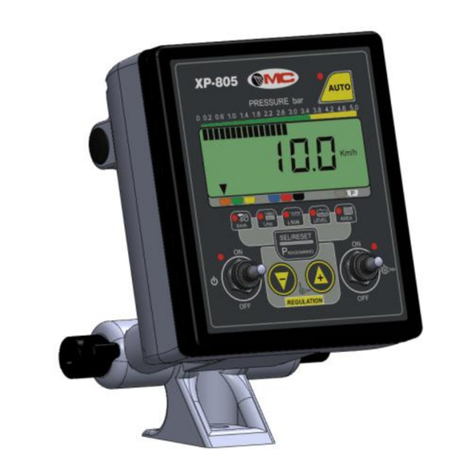
MC Electronics
MC Electronics XP805 Instructions for use and assembly
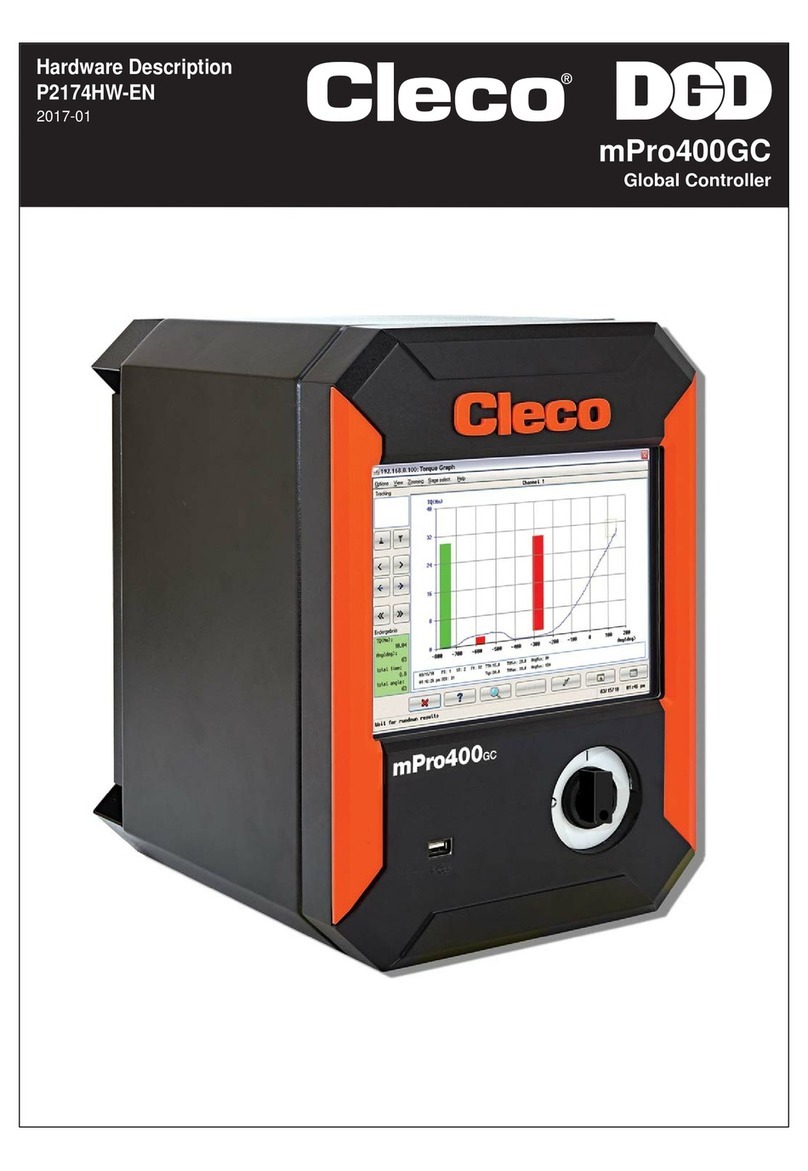
Cleco
Cleco DGD mPro400GC Hardware description
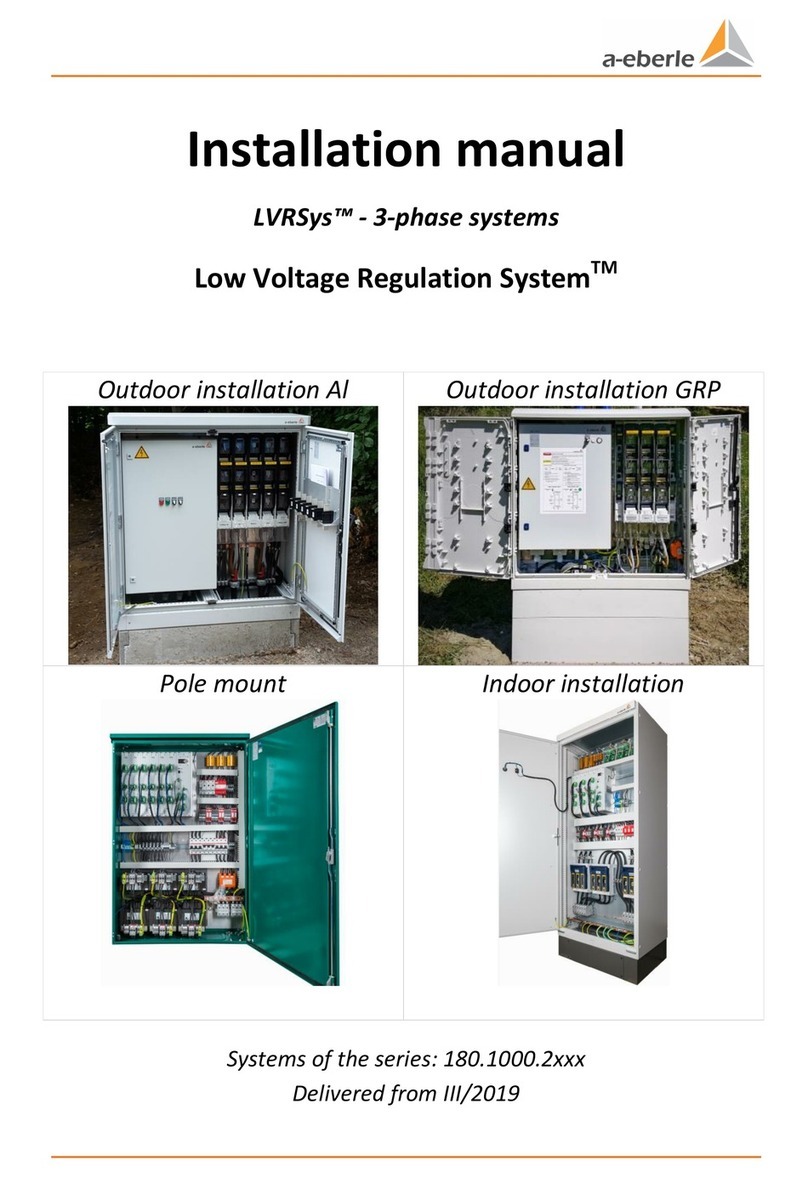
a-eberle
a-eberle Low Voltage Regulation System installation manual
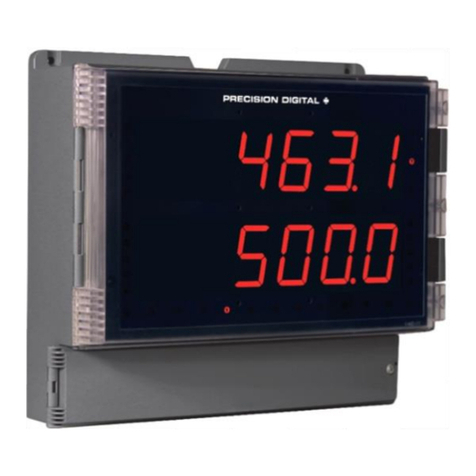
Precision Digital Corporation
Precision Digital Corporation Helios PD2-6310 instruction manual
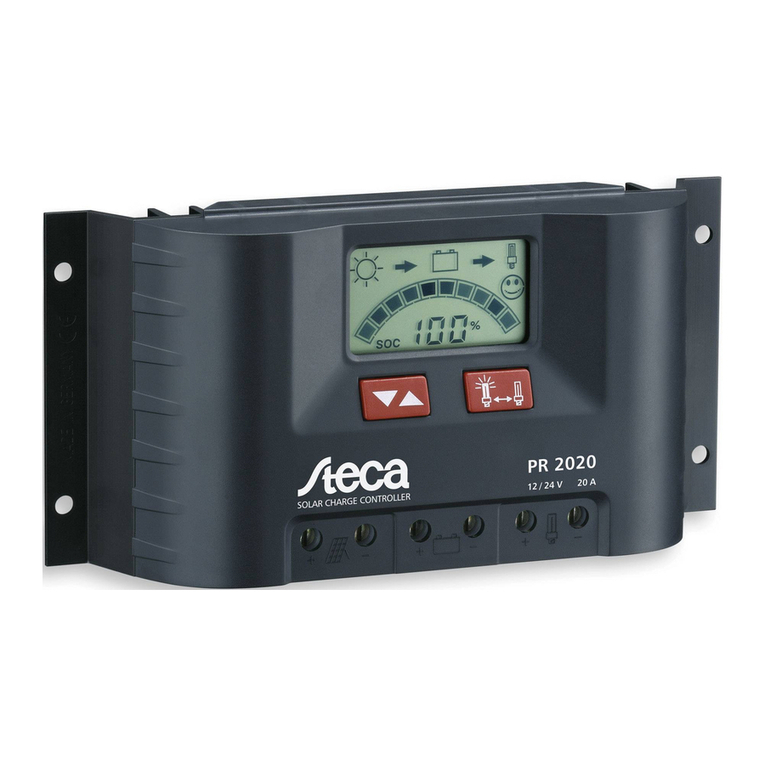
Steca
Steca PR 1010 operating instructions
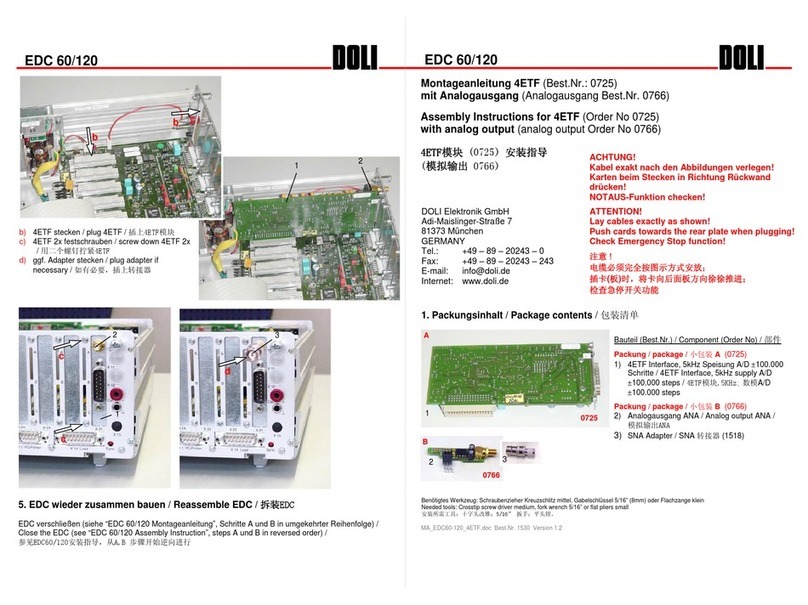
Doli
Doli EDC 60 Assembly instruction

